BEST OF MOSCOW


The most delicious khinkali, the most breath-taking city view, the most unexpected golf club right in the center of Moscow, unrevealed little-known museums, exceptional buildings and lots of other places you won’t find in Lonely Planet guides or Rough Guide and Dorling Kindersley. To help moscovites and Moscow guests to find their way in the city Bolshoy Gorod magazine created guide to Moscow. The selection, based on our taste, includes best churches, places to have a nice stroll, entertainment spots, shops and bars/restaurants
- 26 Октября 2011
- 10 мин
- 1077072
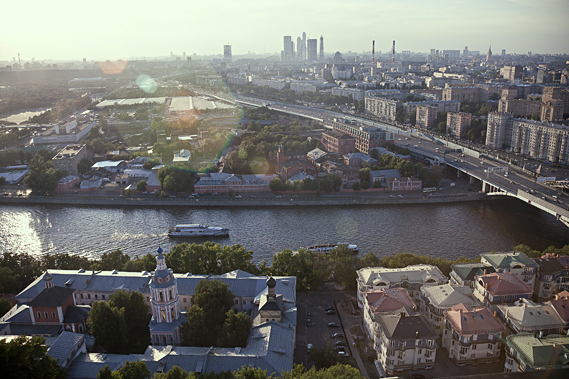
Photo: Mark Boyarsky
This famous high-rise owes its nicknames — "The Golden Brain", or "The Perfume Bottle" — to the unusual gilded structure on its roof. From its location on a high bank of the Moskva River, you can see almost the entire city: on one side, Vorobiovi Hills, the Luzhniki stadium, a subway bridge over the river and Moscow State University; on the other, Leninsky Prospect, Gagarin Square and the tall pipes of a power station. Turning 90 degrees will allow you to see Neskushny Garden, Krimsky Bridge, the Central House of Artists, the Cathedral of Christ the Savior and the Kremlin. Entrance to the building is restricted, but all are welcome to visit the Sky Lounge restaurant on the 22nd floor and the Neskushny Garden bar on the 3rd floor. Good views can also be found from staircases and tiny balconies at the end of each corridor (though the latter might be closed, especially in winter).
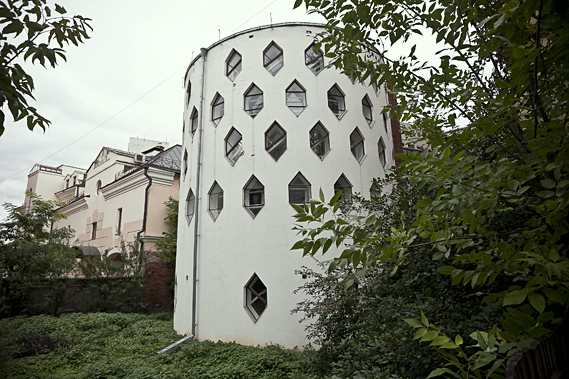
Photo: Mark Boyarsky
This apartment building was designed by architect Konstantin Melnikov in 1929 as his family home. It was the most futuristic monument of its epoch and the only private building in Soviet-era Moscow. Structurally, it consists of two interlinked vertical cylinders of unequal height. You will undoubtedly fail to guess the number of floors from the array of 57 hexagonal windows. The first cylinder has three floors, the second has two and an open roof terrace.
Address: 10, Krivoarbatsky Pereulok
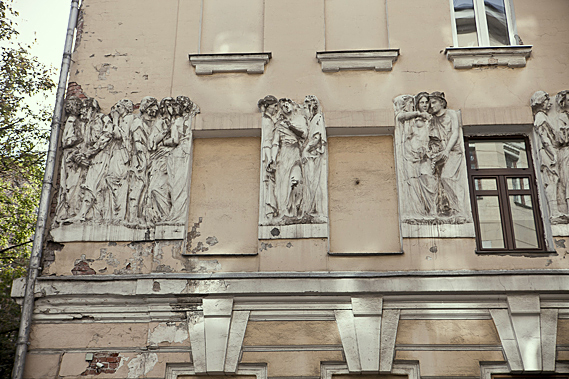
Photo: Mark Boyarsky
This wonderful example of Moscow eccentricity is good for showing to guests of the capital. The house is decorated with bas-reliefs depicting great Russian writers, all of whom seem to be flirting with the beautiful women sharing the reliefs. Rumor has it that before the revolution, the building housed a brothel, and the bas-reliefs immortalize its best clients, including Pushkin, Tolstoy, Gogol and others. Historians believe the work is named Parnassus and was done by the sculptor Sinaev-Bernstein, who intended it to show ancient muses embracing great Russian writers, artists, scholars and other prominent figures. It was commissioned as a frieze for the Museum of the Fine Arts on Vokhonka, but the museum`s director turned it down. Broken-hearted, Sinaev-Bernstein sold it to someone named Broydo to decorate his private home. The frieze had to be chopped in pieces to fit between the windows. Historians, though, are not 100 percent sure of this version, so there`s still ample room for guesswork. Meanwhile, the bas-relief rapidly crumbles. Soon nothing will be left of this bizarre sight.
Address: 4/5, Plotnikov Pereulok
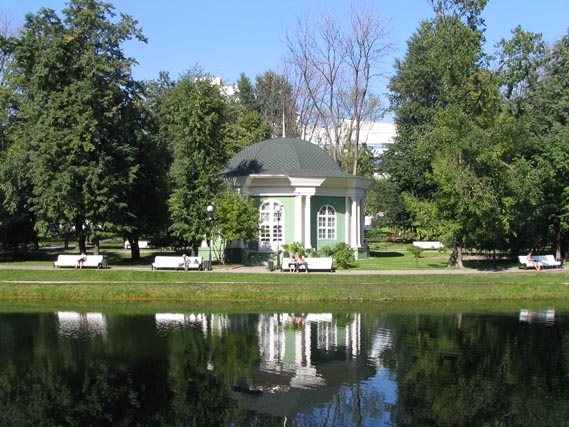
Photo: Andres.
Here, in one of the quietest parks, almost in the very center of Moscow, you can feed the ducks, rent a boat, play tennis, get target practice at the shooting range and observe stars in the planetarium. Only the pond and the building of the Ekaterininsky Institute (the Central House of Russian Army) have survived from Catherine the Great`s time. The rotundas and park pavilions have been restored.
The tennis court costs 1100 rubles per hour, the shooting range 10 rubles per shot, and a boat
200 rubles per half hour
Address: The park is located between Soviet Army Street, Olimpiysky Avenue and Suvorovskaya Square
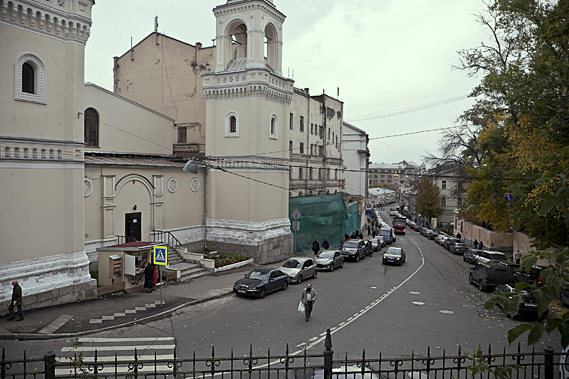
Photo: Mark Boyarsky
This hill is situated at the intersection of Zabelina Street, Starosadskiy, Khokhlovskiy and Maliy Ivanovskiy Pereulok. It is in the heart of the most attractive and untouched part of old Moscow, with endless curving side streets and alleys, dimly-lit interconnecting courtyards, tiny gardens and beautiful little churches and monasteries. With its pleasant patina of many years weathered, this part of Moscow is an ideal place for a stroll. Only the cinema workers who dutifully come here every day seem to save the neighborhood, known as Kitay Gorod, from complete destruction. If this part of the city were spoiled, there wouldn`t be any other place to capture "old" Moscow on film.
Address: Zabelina str., Starosadskiy per., Khokhlovskiy per., Maly Ivanovskiy per.
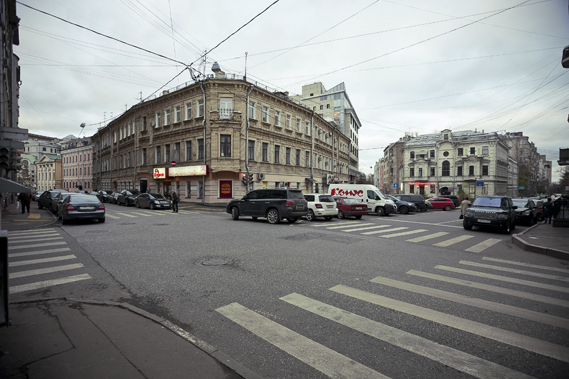
Photo: Mark Boyarsky
This is the smallest square in Moscow, surrounded by listing prerevolutionary buildings. The whole square is just an intersection of four alleys with a triangular patch of lawn outlined by the curb. Europe has plenty of such mini-squares, though there is only one miraculously surviving in Moscow.
Address: Intersection of Lialin, Barashevsky, Maly and Bolshoy Kazionny pereulki
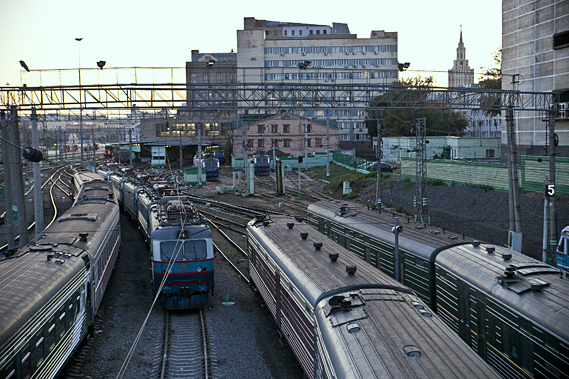
Photo: Mark Boyarsky
PThis bridge spans innumerable railway lines heading towards Kazan in Eastern Russia. It`s a great place for solitary reflection, meditation and trainspotting. The air there always has the cozy, smoky smell typical of Russian railways.
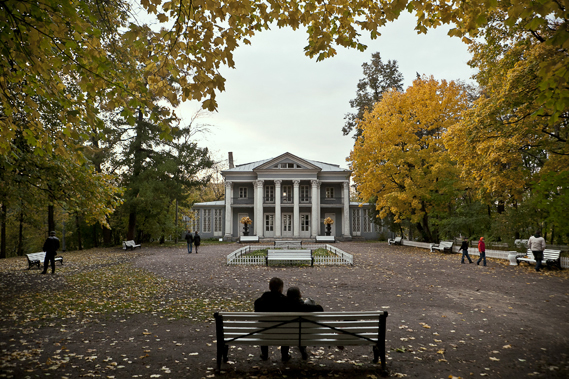
Photo: Mark Boyarsky
This is the largest and oldest park in the city center. The section adjacent to Vorobiovy Hills is like a forest, with paths, ravines and creeks. Closer to Gorky Park are brick bridges, the overgrown Ekaterininsky Pond, and a descent to the river past a famous statue of a bather. Next to the park entrance at Leninsky Prospect there are ping-pong tables, tennis courts and open-air chess tables.
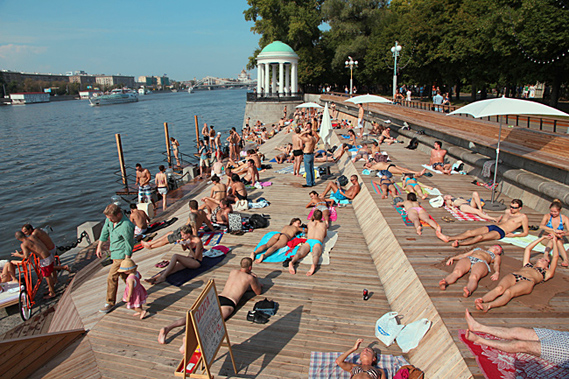
Photo: PhotoXPress
The symbol of Gorky park refurbishment: wooden planking with deckchairs on loose damp sand, olive trees planted in tubs, sunshades, shower bins, outdoor bar and Wi-Fi! The simple thought that there's now such a place in the center of Moscow helps to conciliate with gloomy reality even in Moscow October.
Deckchair & towel — 600 roubles per day, ginger lemonade — 290 roubles
Address: Gorky Park, Pushkinskaya quay, Andreevsky bridge
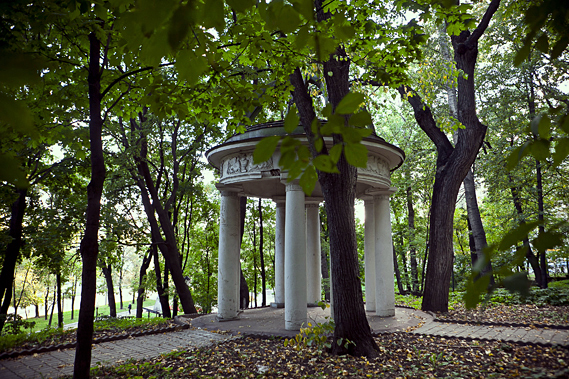
Photo: Mark Boyarsky
The territory of this mansion includes a park, previously called the Sakharov Center garden, that feels like an oasis of calm drowsiness just a few meters from the busy Garden Ring Road. Designed in 1831 by Gilardi for the Usachovs, an affluent family of tea merchants, the old Moscow mansion remains completely intact. The main building facing the Ring Road accommodates the Center of Sports Medicine, which makes it hard to sneak in. But where there is a will there is a way. Either cut a deal with the security guard or just climb over the fence (it`s not tall) to the left of the entrance. Next to the back porch, guarded only by two pairs of lions and griffins (see, it`s perfectly safe), you`ll find a ramp decorated with cast-iron vases that will take you all the way down to the park. Enjoy the paths, Greek sculptures, a terrace, an artificial grotto, rotunda gazebos (with unusual acoustics), and excellent views of the Yauza River`s steep banks. All these treasures were featured in every Russian`s favorite movie, "Pokrovskie Vorota". The hospital where one of the characters, named Khobotov, was brought with a suspected case of peritonitis, and from which he successfully escaped with the help of Kostik and the biker Savransky, is actually the Usachiov-Naydionov mansion.
Address: 53, Zemlianoy Val
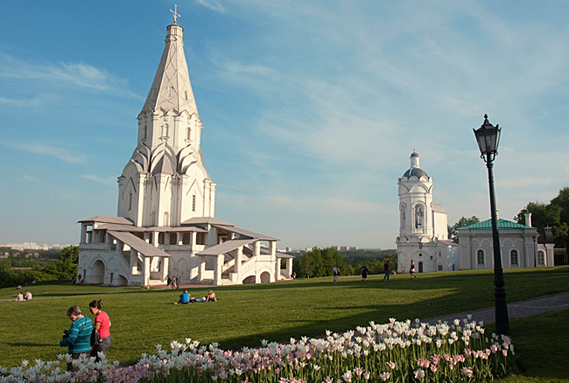
Photo: PhotoXPress
Visit this park on weekdays to avoid the crowds that come here for weddings and entertainment. Try a walk behind the ravine and around the Church of the Beheading of John the Baptist (from the 16th century, no less) in the Dyakovo village area. In spring and summer, forget about long hikes and just loll about on the grass in the apple orchard.
Address: 39, Andropova av.

Photo: Mark Boyarsky
This is the only part of Bulvarnoe Koltso where there are no metro stations swarmed with kiosks and actually no sign of kiosks at all, so you can have a thoughtful stroll here any time you like. Another advantage is the absence of the so-called "Sobyanin tile" on the pavement. Practical as the tile may be, it really spoils the city's boulevards.
Address: from Khokhlovsky sq. till the Yauzsky boulevard
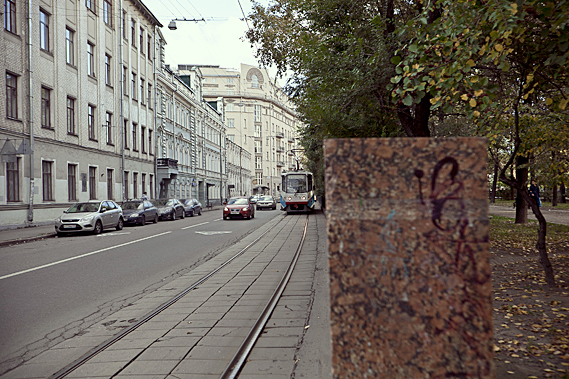
Photo: Mark Boyarsky
One of the most beautiful routes in Moscow, this tram line follows the Boulevard ring, then turns onto Kotelnicheskaya Embankment for a trip through Stalin-era Moscow. The finale is the area across the Moskva River from the Kremlin.
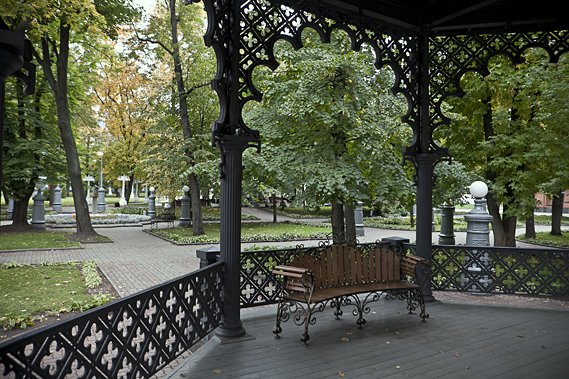
Photo: Mark Boyarsky
This park, one the oldest in Moscow, accommodates three theaters: the Hermitage (in a 19th-century building), the Sphere, and the New Opera. In the summer, visitors are attracted by picturesque paths, flowers, delicate gazebos, open-air concerts, wrought-iron benches and terraces — especially the terrace of the restaurant Chaikhana №1. In the winter time there is nothing like ice-skating along the paths. On days when there are no concerts, festivals or fairs, the park is populated mainly by neighborhood moms pushing their prams and strollers.
Addresss: 3, Karetniy Riad, stroyenie 7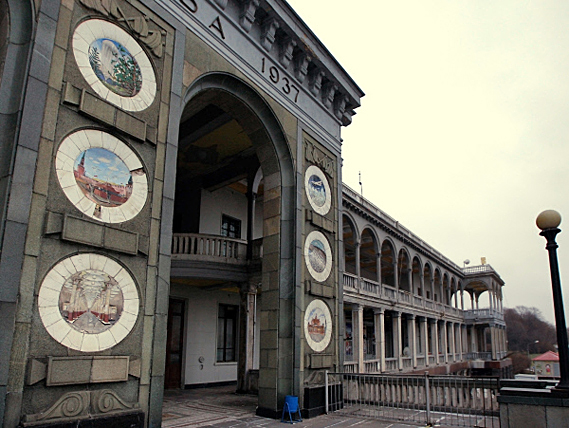
Photo: RIA Novosti
This boat terminal opened in 1937, together with the Moscow Canal. The architectural style is Stalin-era Empire, a bit modified by dilapidation. A ceramic medallion on the façade depicts the never-built Palace of Congresses, which was supposed to stand on the site of the Cathedral of Christ the Savior. The station has been nominally under renovation since 2007, but there is no evidence thereof. The sprawling park nearby is a great place for long walks. The overall atmosphere reminds one of a Black Sea resort in the 1990s.
Address: 51, Leningradskoe shosse

Photo: Mark Boyarsky
This is one of the best-preserved streets in the historic center of Moscow. Almost all the buildings here belong to the 17th to 20th centuries, and each is worth a separate excursion. The absence of stores and cafés on the ground floors enhances the aesthetics of the façades and improves the general atmosphere.
Address: from Zubovski sq. till Prechistenskie Vorota

Photo: Mark Boyarsky
This park is located in southwestern Moscow between the Tyoply Stan and Yasenevo districts. The entrance is through a beautiful brick gate on Profsoyuznaya Street. The gate also happens to be the beginning of a path called Sanatornaya Alleya, which will take you all the way to Bitsevsky Park.
The Uzskoy Estate is pleasantly neglected and deserted, with the musty fragrance of fallen leaves, thickets of hazel and wild ferns. You can feed the ducks in the cascading ponds.
The sanatorium of the Academy of Sciences still operates in the park, as well as the excellent Moscow Museum of Paleontology.
Address: 123a, 123b, Profsoyuznaya st.
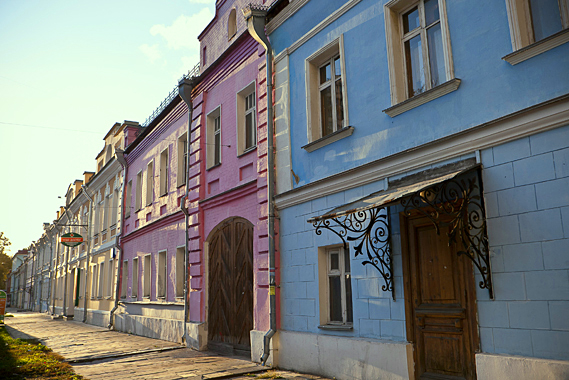
Photo: Mark Boyarsky
This unusual pedestrian street is located outside the busy Garden Ring road. It`s like a tourist area, but without any tourists, cafes or stores. It consists largely of two-story houses, which in the 19th century served as inns for wagon trains heading to Moscow along the Vladimir and Ryazan routes. The ground floors, which housed stores and eateries, still have the same wide windows and doors with wooden shutters and ample gates to accommodate horses. Today various state institutions occupy the houses and the streets are lined with parked cars (they can enter to park, but can`t drive through). On Saturdays and Sundays there is a fair, which is held closer to Rogozhsky Val Street. Just like old times!
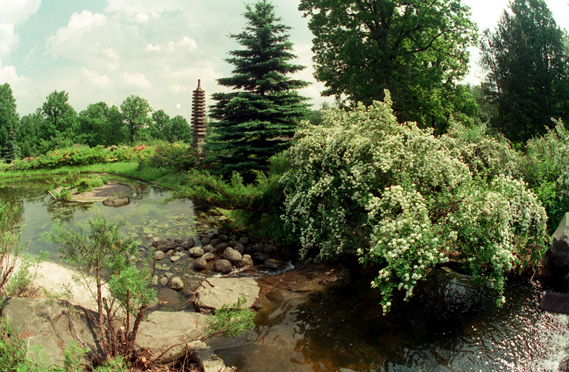
Photo: ITAR-TASS
This special section of the Botanical Garden, created in the 1980s by gardeners from Japan, was laid out according to all the proper rules and planted with trees, bushes and flowers imported straight from Hokkaido. The place is the most successful example of Japanese landscape design within walking distance for Muscovites. The small garden gets overcrowded on weekends, populated mostly by girls who take each others` pictures under every tree (getting full value for the entrance fee), though on weekdays it is a good place for pondering in solitude. Sakura cherry trees start blooming in late April, followed by apricot trees, rhododendrons, and finally by irises and other flowers.
Address: 4, Botanicheskaya st.
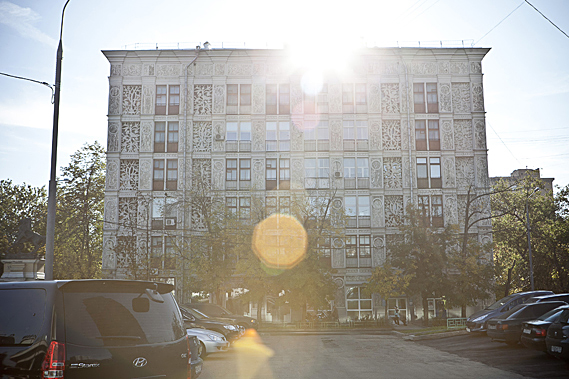
Photo: Mark Boyarsky
This is a true highlight of Leningradsky Prospect: the first Moscow apartment building made of concrete panels, created in 1936—1940 by the architect Burov. To make tenants` life comfortable, Burov designed the building as a multi-use complex with its own cafe, dry cleaner, laundry and even a preschool located on the building`s ground floor. Nevertheless, Muscovites were mostly impressed with the delicate latticework of the balconies, conjured up by the famous designer Favorsky. As a result, the building is known as the Ajure House.
Address: 25, Leningradsky av.
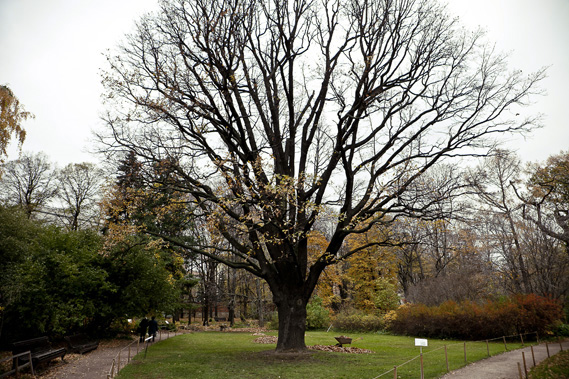
Photo: Mark Boyarsky
This small, neat botanical garden has existed since 1706. It boasts a ponds with red-eared slider turtles and Napoleon fish, 250-year-old trees, benches, paths and alleys, flowers blossoming year-round and 19th-century greenhouses (some still in renovation). The cafes and restaurants here, with their windows, terraces and balconies all facing the garden, have a huge advantage in comparison with other places in the city. The restaurant "Madame Galife," opened by the Georgian director and screenwriter Reso Gabriadze, is a must.
The entrance fee for the garden is 100 rubles before 6 p.m. and 150 rubles later
A yearlong pass costs 2 000 rubles
Address: 26, Prospekt Mira
- 26 Октября 2011
- 1077072
- 10 мин
- Вверх











